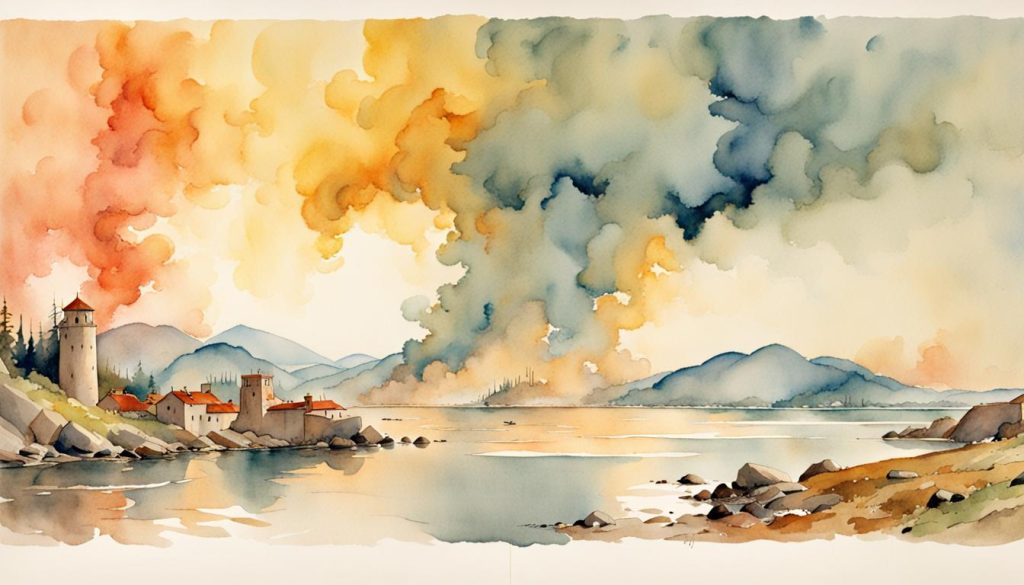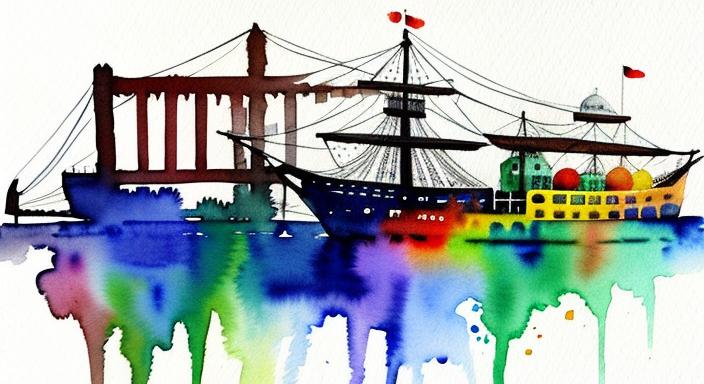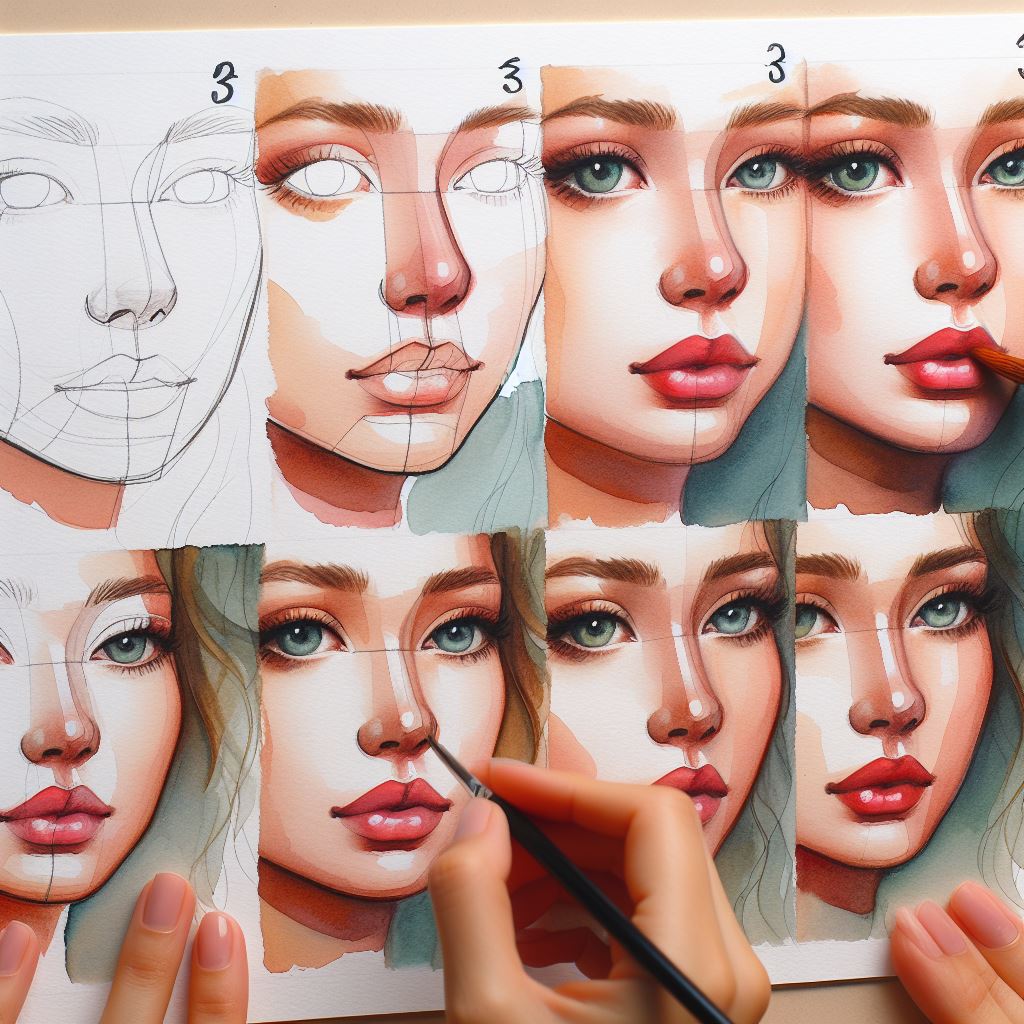“I have learnt to look at nature with more humble, yet more searching eyes than before.”
William Wordsworth, poet
 example ofcstyle” class=”wp-image-2280″/>
example ofcstyle” class=”wp-image-2280″/>Watercolor, with its delicate transparency and luminous glow, has captivated artists and audiences for centuries. Yet, a specific period in its history shines particularly bright: the Golden Age of Watercolor, roughly spanning from the mid-18th to the mid-19th century. This era witnessed a blossoming of the medium, not just in technical advancements but also in artistic expression and societal impact. Let’s delve into this vibrant chapter, exploring the factors that fueled its rise and the masterpieces that continue to captivate us today.
Key Characteristics of the Golden Age of Watercolor (1750-1850)
| Feature | Description |
|---|---|
| Artistic Context | Rise of Romanticism, emphasis on emotion, nature, and individual experience. |
| Technical Advancements | New vibrant pigments (Prussian Blue, Winsor Yellow), improved papermaking, innovative techniques like wet-in-wet layering and scraping. |
| Dominant Genres | Landscapes, topographical and travel sketches, botanical illustrations. |
| Key Artists | J.M.W. Turner, Thomas Girtin, Samuel Palmer, John Sell Cotman, William Turner of Oxford. |
| Societal Impact | Democratization of art, rise of amateur societies, increased appreciation for British landscapes and colonial exploration. |
| Global Influence | Spread of British watercolor style to Europe (Delacroix) and Asia (Hiroshige). |
| Legacy | Technical advancements pave the way for future development, watercolor elevated as a powerful artistic medium, broader engagement with art. |
A Perfect Storm of Flourishing
The Golden Age wasn’t merely a coincidence; it was the culmination of several converging forces:
- Technological Advancements: The invention of new pigments like Prussian Blue and the refinement of existing ones like Winsor Yellow offered a wider, more vibrant palette. Papermaking techniques also improved, providing sturdier surfaces for washes and layering.
- The Rise of Romanticism: This artistic movement emphasized emotion, nature, and individual experience, perfectly aligning with the expressive potential of watercolor. Landscapes, with their fleeting beauty and emotive evocation, became a central theme.
- British Patriotism and Exploration: Britain’s growing colonial empire and fascination with its diverse landscapes fueled a demand for topographical and travel sketches, often rendered in watercolor for their portability and immediacy.
Masters of the Wash:
“Watercolor! The most beautiful, the most difficult, the most capricious of all mediums.”
Eugène Delacroix, French artist:
This fertile ground nurtured a generation of exceptional artists who pushed the boundaries of the medium and redefined its possibilities:
- J.M.W. Turner: A titan of the era, Turner’s watercolors were symphonies of light and atmosphere. He used innovative techniques like wet-in-wet layering and scraping to create ethereal, almost abstract landscapes that captured the grandeur and transience of nature.
- Thomas Girtin: Turner’s contemporary, Girtin, was a master of topographical accuracy and atmospheric effects. His panoramic views of the British countryside showcased the precision and detail possible with watercolor.
- Samuel Palmer: A member of the visionary “Shoreham Ancients” group, Palmer’s watercolors were imbued with a dreamlike quality. He used muted tones and symbolic imagery to create evocative scenes of rural life and mythology.
Beyond the Masters:
The Golden Age wasn’t just about a handful of celebrated figures. It also witnessed:
- The Rise of the Amateur: Advancements in pigment production and readily available materials made watercolor accessible to a wider audience. Amateur societies flourished, fostering a culture of artistic exploration and appreciation.
- A Global Phenomenon: The influence of British watercolor spread across Europe and beyond, inspiring artists like Eugène Delacroix in France and Hiroshige in Japan.
A Legacy in Watercolors:
The Golden Age left an indelible mark on the art world:
- Technical Innovations: The advancements in pigments and papermaking techniques set the stage for future watercolor development.
- Elevated Artistic Expression: Watercolor was no longer relegated to mere sketches or botanical illustrations. It became a powerful tool for capturing emotion, light, and the essence of a landscape.
- Democratization of Art: The accessibility of watercolor fostered a broader engagement with art, both as a practice and as an appreciation.
A Continuing Inspiration:
Today, the Golden Age of Watercolor continues to inspire artists and art lovers alike. Its masterpieces hang in prestigious galleries, while its techniques and spirit are echoed in contemporary watercolor practices. As we delve into the washes and brushstrokes of this era, we are reminded of the beauty, emotion, and expressive power that can be born from a simple brush dipped in water.
Further Exploration:
To delve deeper into the Golden Age of Watercolor, here are some resources:
- Museums: Tate Britain, Victoria and Albert Museum (London), Metropolitan Museum of Art (New York)
- Books: “The Golden Age of Watercolours” by Eric Shanes, “J.M.W. Turner” by Andrew Wilton
- Documentaries: “Turner: The Man Who Painted the Sun” (BBC), “The Secret Lives of Watercolour” (Channel 4)
So, the next time you encounter a delicate watercolor wash, remember the rich history and artistic brilliance that lie behind it. Let the Golden Age inspire you to explore your own creativity and appreciate the magic that unfolds when water meets pigment.


